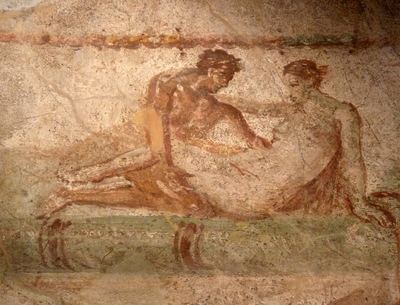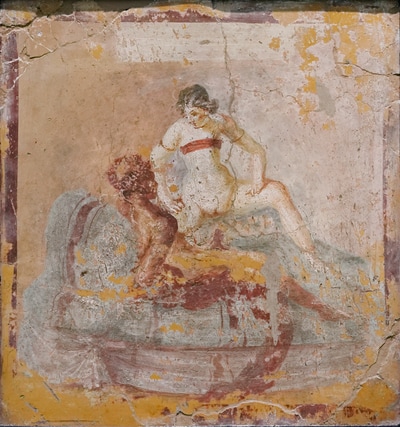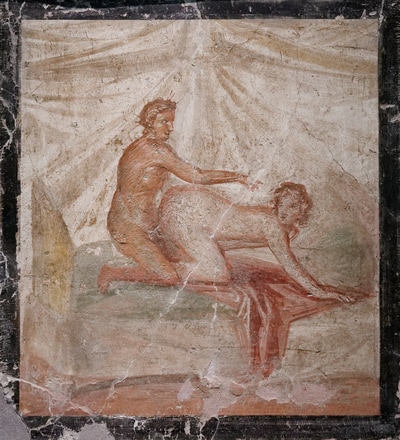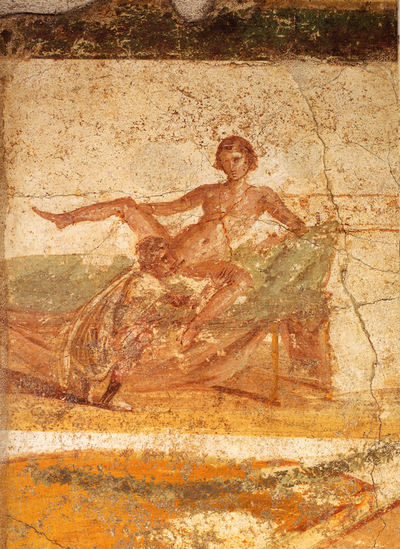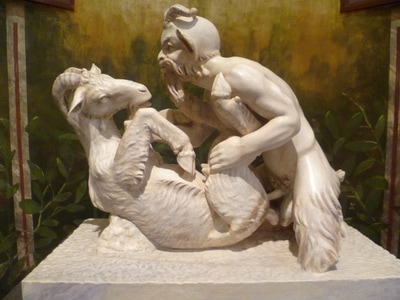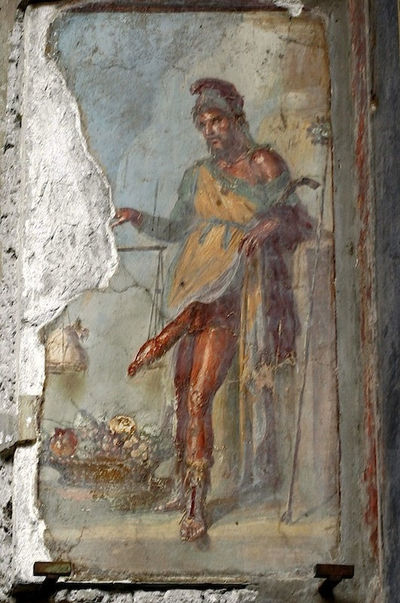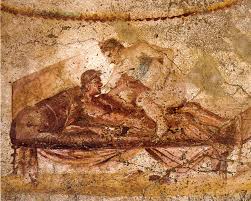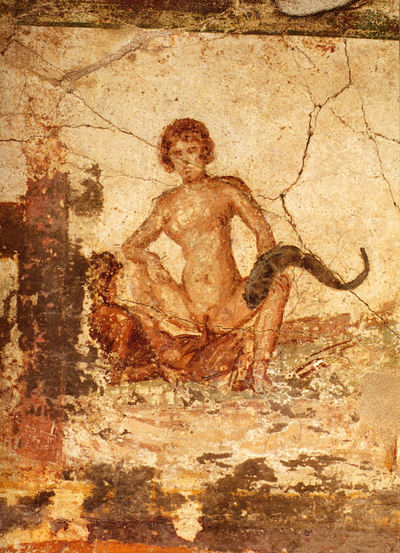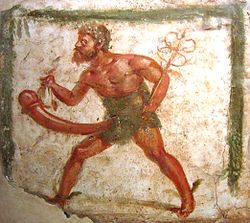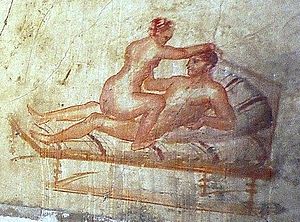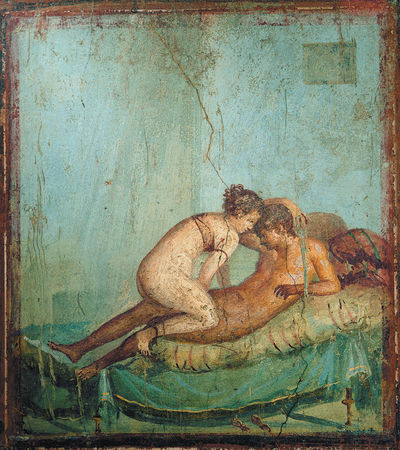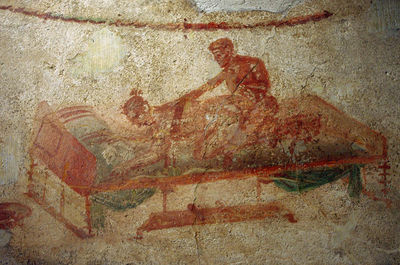The Roman cities of Pompeii and Herculaneum were destroyed by the eruption of Mount Vesuvius in 79 AD. The cities were preserved under volcanic ash until extensive archaeological excavations began in the eighteenth century. These digs excavated many erotic artefacts, such as statues and frescoes. The sheer amount of erotica has allowed historians to better understand ancient Roman attitudes to sexuality. However, when these items were first uncovered they deeply shocked the Victorians, and most of the erotic art from Pompeii being locked away from the public for nearly two hundred years.
These are frescoes that decorated the walls of public buildings, private residents, brothels and even family dwellings.
These are frescoes that decorated the walls of public buildings, private residents, brothels and even family dwellings.
